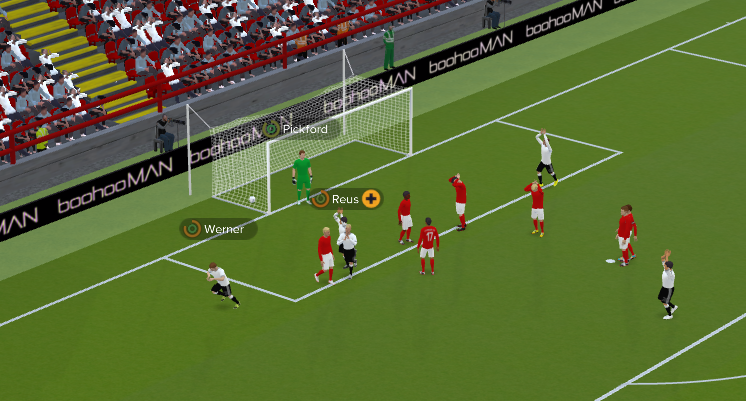
UPDATED: 27 Jun 2018
Five reasons why brands should shift from display advertising to in game advertising
Written by bidstack1) In game advertising is a lot less disruptive than display advertising
Let’s be honest: banner and interstitial adverts really don’t look great. However much work advertisers put into designing compelling display creative, the fact is that all display advertising on mobile and desktop ultimately disrupts the user experience.
In game advertising is different. Players will churn out of a game if they feel like the experience is being ruined or disrupted. Therefore, in game advertising creative must be adapted to fit the environment it is in.

Obviously, that leads to a lot more work for us. But when we’re able to serve a typical ad unit like a 728×90 banner in a game like Football Manager in an authentic way, we think you’ll agree that it is much better than its web counterparts.
2) Game publishers have higher standards than web and mobile publishers
The standards of an advertising format are, in many ways, set by the publishers who display them. If publishers have a higher quality threshold, then the advertising unit has to be better. And if its lower, the quality inevitably suffers.
The race to the bottom in the web and mobile app industries has driven the quality of standard display advertising units down. The combination of widely prevalent ad networks and publishers desperate for revenue has seen the quality of impression based creative suffer enormously.
But for in game advertisement, the quality bar is still there. Console and PC game developers in particular are aware that their paying customers won’t tolerate inappropriate or poorly integrated creative.
That means that games that do serve ads into their world have buy in from both the publisher and its audience. This makes it a safe – and potentially valuable – environment for advertisers to place their campaigns in.
3) Adblockers can’t reach in game adverts
Adblocking is widespread on desktop and on mobile. With user privacy coming to the forefront and with many display ads impacting the performance of the vehicle their served in, it’s no big surprise people reach for the adblock.

In game advertising, however, isn’t affected by this. Because our API is hardcoded into the environment, ad blocking tech can’t touch it. This means that when you buy an ad campaign in a game, you know it’ll definitely be served to the audience that reaches it.
4) In game advertising respects user privacy
In addition to the point above, in game advertising actually respects user privacy much more effectively than other display advertising.
In the online advertising space, display advertisers have to do all they can to identify their users. Whether it is using cookies to track user behaviour or coming up with other ways to profile users, advertisers and publishers reliant on web display ads run the risk of crossing the “privacy first” line.
But for in game advertising, it’s rather different. Because user data on console and Steam is limited to general demographic data – gender, rough location, age and interests – individual user privacy is respected much more effectively.
And with many believing that the EU’s GDPR regulation could be extended to make identifiable “anonymised” data in breach of its principles, in game advertising could offer advertisers with safe impressions and decent reach.
5) In game adverts are cost effective
Finally, in game adverts are cost effective. Well, at least for now. As the space is still new and something unfamiliar to advertisers, there are great deals to be done on a CPM basis.
However, that ship could sail. With plenty of companies creating plans to reach the 2.3bn strong audience of gamers around the world, advertisers may have to move quickly to stay ahead of the competition.
Want to advertise in games such as Football Manager 2018? Contact our team at sales@bidstack.com for more information.
Written by bidstack | 27 Jun 2018
ALL POSTS